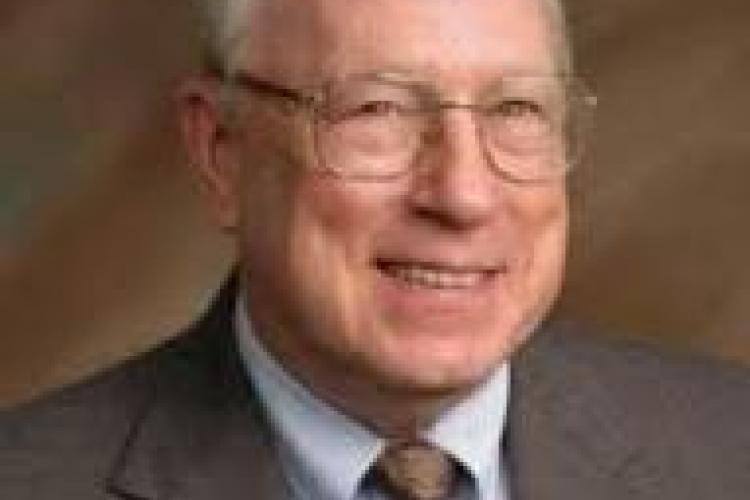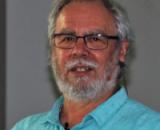Is Theosophy a Religion? by John Algeo

The title question of these ruminations might seem to be pointless—a query to which the answer is obvious and well known. After all, the very first question and answer in H.P. Blavatsky´s handbook, The Key to Theosophy (p.1), go like this:
ENQUIRER. Theosophy and its doctrines are often referred to as a newfangled religion. Is it a religion?
THEOSOPHIST. It is not. Theosophy is Divine Knowledge or Science.
And that is not HPB’s only pronouncement on the subject. Just a bit further on, in speaking of the ancient Alexandrian theosophists, she says:
The chief aim of the Founders of the Eclectic Theosophical School was one of the three objects of its modern successor, the Theosophical Society, namely, to reconcile all religions, sects and nations under a common system of ethics, based on eternal verities.
That which reconciles all religions can hardly be itself a religion. On the other hand, she speaks (pp.7-8,13) of the ‘Wisdom-Religion’, which
was ever one, and being the last word of possible human knowledge, was, therefore, carefully preserved. It preceded by long ages the Alexandrian theosophists, reached the modern, and will survive every other religion and philosophy … Theosophy, as already said, is the WISDOM-RELIGION.
So Theosophy is not ‘a religion’, but is ‘the Wisdom-Religion’. When the enquirer returns to this question a bit later (p.58), the theosophist respondent makes the same point again:
ENQ. But Theosophy, you say, is not a religion?
THEO. Most assuredly it is not, since it is the essence of all religion and of absolute truth, a drop of which only underlies every creed.
These passages are distinguishing between ‘a religion’ and ‘the essence of all religion’, also known as ‘the Wisdom-Religion’. Theosophy is not the former, but it is emphatically the latter. What is the difference? To understand that, we need to understand what HPB understood by the terms—a process known in Confucianism as the ‘rectification of names’. To ‘rectify’ names is to understand the words we use: both what we mean by them and how others interpret them. Without such ‘rectification of names’, we are running around in circles in a foggy lexical swamp.
As the term ‘a religion’ is commonly used, it is exclusivist. If one is a Christian, one cannot be a Muslim; if one is a Hindu, one cannot be a Buddhist; and vice versa. Assuredly Theosophy is not ‘a religion’ in that sense, because theosophists are Buddhists, Christians, Hindus, Jews, Muslims, Zoroastrians, and adherents of a great many other ‘religions’, or adherents of no such religion at all. This exclusivist sense of ‘religion’ came out once very clearly in a question-and-answer session between a class of theological students in a Christian fundamentalist college and a theosophist. During the session, the students put the inevitable question: ‘Do you accept Christ as your personal saviour?’ The theosophist´s answer was immediate: ‘Certainly, and also the Buddha, Confucius, Zoroaster, Mahâvira, and others.’ There was a pause, and then the questions went in a different direction. The questioners could not understand such an answer because for them ‘personal saviour’ was an exclusive term that could be applied to one individual only. They and the theosophist had not rectified the names they were using, so they were in fact talking about different things altogether.
On the other hand, there is a more inclusive sense of ‘religion’ that may well apply to Theosophy. Professor Robert Cummings Neville, in his foreword to a book that considers whether Confucianism can be called a religion (which is often denied by scholars), gives three elements of any tradition to which the term ‘religion’ can be applied:
A religious tradition has at least three essential elements, each handed down and developed in the multitude of ways traditions transmit. One element is a mythic, philosophical, or theological cosmology defining the fundamental structures and limits of the world and forming the basic ways in which cultures and individuals imagine how things are and what they mean … A second essential element of religion is ritual … a finite set of repeatable and symbolizable actions that epitomize things a tradition takes to be crucial to defining the normative human place in the cosmos … The third essential element is that a tradition have some conception and practical procedures for fundamental transformation aimed to relate persons harmoniously to the normative cosmological elements, a path of spiritual perfection. (Taylor, pp. ix-x)
Theosophy certainly has the first element, expressed especially in HPB´s Secret Doctrine, with its Cosmogenesis and Anthropogenesis, and various later restatements by others of that cosmology.
It is sometimes denied that Theosophy has the second element, ritual; but Robert Ellwood has pointed out that theosophical meetings tend to follow a set pattern involving at its core a lecture followed by questions and answers and often a sort of communion of punch and cookies. And then on occasions like White Lotus Day there are certain traditional readings. And many theosophists follow a set procedure for daily meditation. All of those actions are in fact rituals, in the sense of ‘a customarily repeated often formal act or series of acts’, as Merriam-Webster´s Collegiate Dictionary puts it. We sometimes do not recognise our own rituals, supposing them instead to be just the way things are done.
As for the third element, it might be argued that it is in fact the essence of Theosophy, in accordance with HPB´s dicta that ‘theosophist is, who Theosophy does’ (Key 20) and her emphasis on the importance of ethics in the life of the theosophist, as for example in the subtitle of The Key: A Clear Exposition … of the Ethics, Science, and Philosophy for the Study of which the Theosophical Society has been Founded. Other evidences of the centrality of ‘fundamental transformation’ or ‘a path of spiritual perfection’ in Theosophy are the three well-known spiritual classics, At the Feet of the Master, Light on the Path, and The Voice of the Silence, as well as Radha Burnier´s lectures on Human Regeneration.
Moreover, the theologian Paul Tillich maintained that religion is a matter of ‘ultimate concern’. That is, it deals with matters that are of unconditional value and meaning in life. Theosophy clearly does that, as well. If Theosophy has a cosmology, uses rituals, offers practical procedures for fundamental transformation, and points to matters of ultimate concern, then it is religion by both Neville´s and Tillich´s definitions, though still not exclusively ‘a religion’. Perhaps that is what HPB meant by calling Theosophy ‘the essence of all religion’. ‘Essence’ is the ‘being’ of a thing—what makes it what it is, as distinct from its ‘accidents’, its merely surface characteristics, which are all that we normally see and which are constantly changing without affecting the essential nature of the thing.
For example, every human being is in a flux of continual change—anatomically, beh- aviourally, emotionally, mentally, and in every way we can see when we observe a person. Each of us is aware of those constant changes inside ourselves, and yet we are convinced that, in spite of the flux, there is a core, an essence, that is ‘us’ and does not change. Changes are of the ‘accidents’, aspects that do not really matter. Our ‘essence’ continues.
So religions have ‘accidents’ too. And the accidents are the things that make one religion different from another. It is adherence to those accidents, rather than to the essence, of religion that has produced violence, persecutions, and wars. It was doubtless of those accidents that the Master KH was thinking when he commented on A.O. Hume´s essay on ‘God’: ‘I will point out the greatest, the chief cause of nearly two thirds of the evils that pursue humanity ever since that cause became a power. It is religion under whatever form and in whatsoever nation’ (Mahatma Letters, pp.57/274). It is noteworthy that the Master alluded to the ‘form’ (or accidents) of religion, not to its essence.
We must not, of course, confuse the particular formulation of Theosophy we happen to favour with the Wisdom-Religion. Doing that converts Theosophy into ‘a religion’ and misunderstands the essential point of Theosophy, which is to rise above sectarian differences. As Madame Blavatsky warned in her letters to a convention of theosophists, ‘Orthodoxy in Theosophy is a thing neither possible nor desirable’ (Collected Writings 9:243), and again, ‘Theosophy is essentially unsectarian, and work for it forms the entrance to the Inner life’ (11:166). So Theosophy is not ‘a religion’, but is ‘the essence of all religion’.
A correspondent for the Wall Street Journal recently visited the Theosophical Society in New York and published his impressions of that visit. His article was entitled ‘Don´t Call It a Religion!’ (17 May 2002, W15), in which he considered the question that is the title of this article. His concluding paragraphs sum up his impression:
In his classic book On the Varieties of Religious Experience, William James [an American philosopher and psychologist who was also a member of the Theosophical Society] identified two types of religion. The first is what we mean when we speak of institutional religion—‘an external art, the art of winning the favour of the gods’. The second is ‘the more personal branch’, defined as ‘the inner dispositions of man himself which form the centre of interest, his conscience, his deserts, his helplessness, his incompleteness’.
What is Theosophy? Arguably, a religion in this second sense. It contains, at the least, the idea that there is more to life than oneself. Here on 53rd Street [the address of the New York Theosophical Society] is a religion for anyone—those who already have a religion and those who neither have one nor want one. Unitarianism is accused of being a religion in name only. Here is a religion in all but name.
The distinction William James drew was basically that between accidents and essence, ‘a religion’ and ‘the Wisdom-Religion’. And the correspondent recognised that Theosophy, though not the former, is indeed the latter.
Bibliography:
Blavatsky, H. P., Collected Writings, 15 vols., Theosophical Publishing House, Wheaton, IL, Adyar, Chennai, India, 1966-91.
Blavatsky, H.P., The Key to Theosophy, Being a Clear Exposition, in the Form of Question and Answer, of the Ethics, Science, and Philosophy for the Study of which the Theosophical Society has been Founded, Theosophical Publishing Company, London, 1889.
Burnier, Radha, Human Regeneration, Uitgeverij der Theosofische Vereniging in Nederland, Amsterdam, 1990.
The Mahatma Letters to A. P. Sinnett from the Mahatmas M. & KH, Comp. A.T. Barker, 3rd ed., ed. Christmas Humphreys and Elsie Benjamin, Theosophical Publishing House, Adyar, Chennai, 1962. Chronological ed., ed. Vicente Hao Chin, Jr., Theosophical Publishing House, Quezon City, Manila, Philippines, 1993.
Taylor, Rodney L., The Religious Dimensions of Confucianism, State University of New York Press, Albany, 1990.
Published in The Theosophist, November 2002
Inglés

 This Theosophical Encyclopedia contains all the articles of the printed
This Theosophical Encyclopedia contains all the articles of the printed 